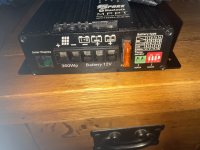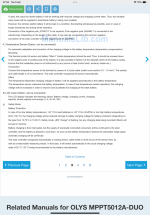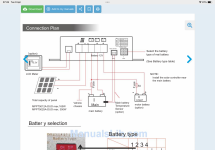Sonar
Full Member
- Messages
- 194
I am sure the answer will be no but I am asking anyway ..
I have solar panels on the Moho roof .
It has a mttp controller At the moment I have 2 lead batteries for the habitation area and one that runs the engine under the bonnet..
The solar charger allows to charge two batteries having two battery charging outlets. so I have used one for the connected habitation batteries
And the other to the engine battery …
The question
I will be changing the habitation batteries to lithium batteries soon including all the assorted bits that go with it .
The solar controller will be altered to lithium using dip switches on the unit.
So I know the habitation batteries will be solar charged . What about the engine battery there is only one set of switches to change to lithium. For both outlets
Will I still be able to charge the engine battery or will I have to disconnect it.
If I have to disconnect it what are my options. .. the only one I can think of is yet another solar. System.
I have solar panels on the Moho roof .
It has a mttp controller At the moment I have 2 lead batteries for the habitation area and one that runs the engine under the bonnet..
The solar charger allows to charge two batteries having two battery charging outlets. so I have used one for the connected habitation batteries
And the other to the engine battery …
The question
I will be changing the habitation batteries to lithium batteries soon including all the assorted bits that go with it .
The solar controller will be altered to lithium using dip switches on the unit.
So I know the habitation batteries will be solar charged . What about the engine battery there is only one set of switches to change to lithium. For both outlets
Will I still be able to charge the engine battery or will I have to disconnect it.
If I have to disconnect it what are my options. .. the only one I can think of is yet another solar. System.



